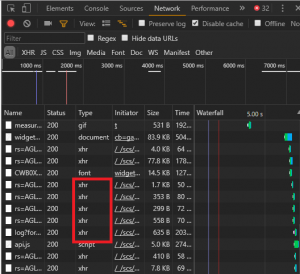fetch('<URL-to-the-resource-that-is-being-requested>');
fetch('https://api.unsplash.com/search/photos?page=1&query=flowers')
fetch('https://api.unsplash.com/search/photos?page=1&query=${searchedForText}', {
method: 'POST'
});
[javascriit]
fetch(‘https://api.unsplash.com/search/photos?page=1&query${searchedForText}’, {
headers: {
Authorization: ‘Client-ID abc123’
}
}).then(function(response){
debugger;
});[/javascript]
Since the Unsplash API we’re using will return JSON to us, we just need to call .json() on the response variable.
fetch('https://api.unsplash.com/search/photos?page=1&query${searchedForText}', {
headers: {
Authorization: 'Client-ID abc123'
}
}).then(function(response){
return response.json();
});
function addImage(data){
let htmlContent = '';
const firstImage = data.result[0];
if (firstImage){
htmlContent = '<figure>
<img src="${firstImage.urls.small}" alt="${searchedForText}">
<figcaption>${searchedForText} by ${firstImage.user.name}</figcaption>
</figure>
} else {
htmlContent = 'Unfortunately, no image was returned for your search.'
}
responseContainer.insertAdjacentHTML('afterbegin', htmlContent);
}


